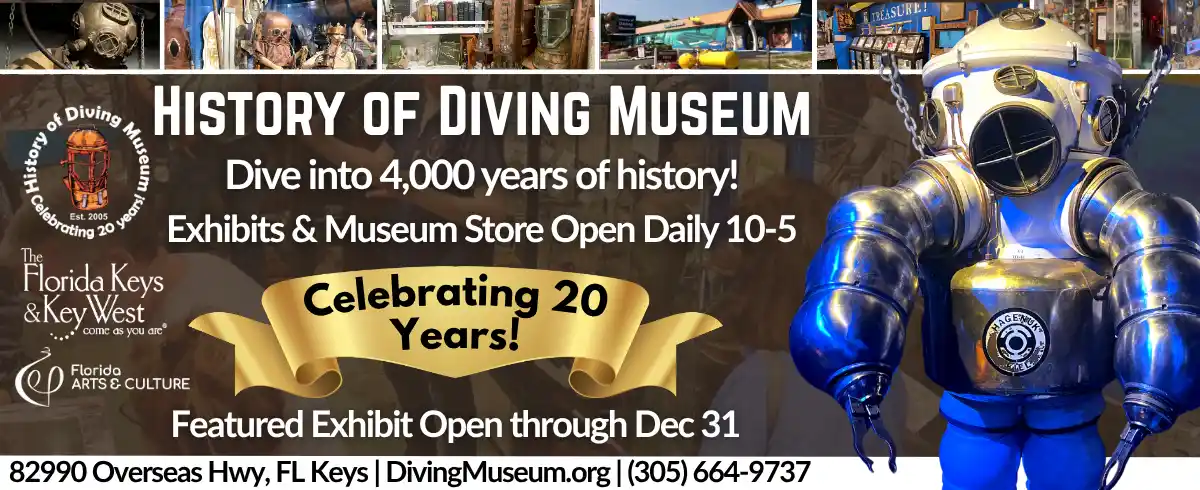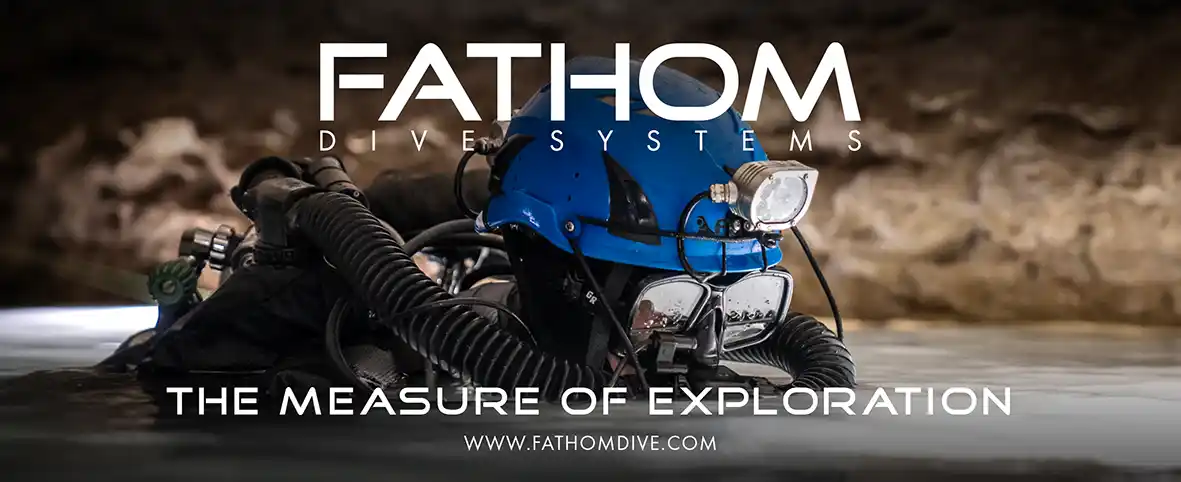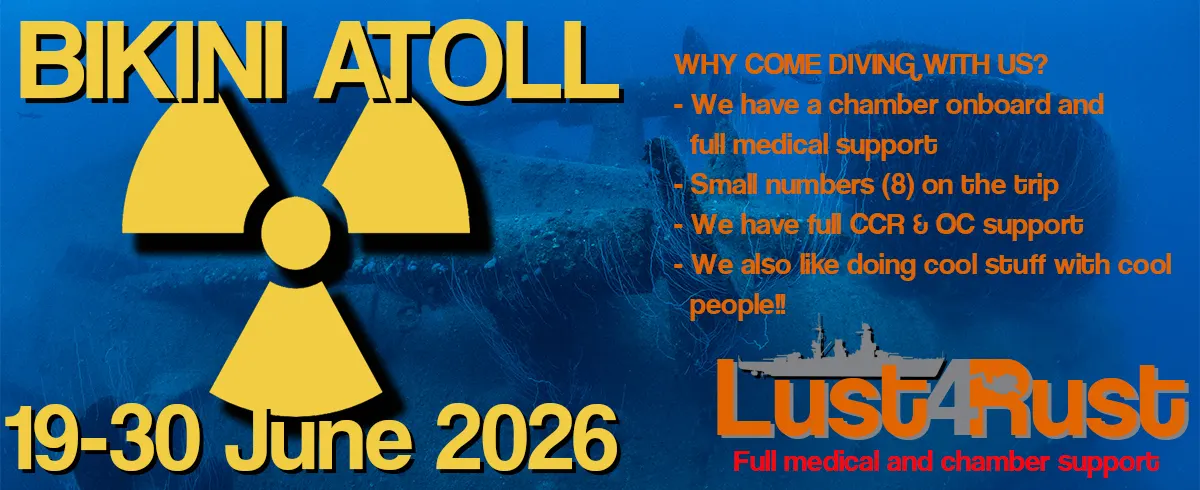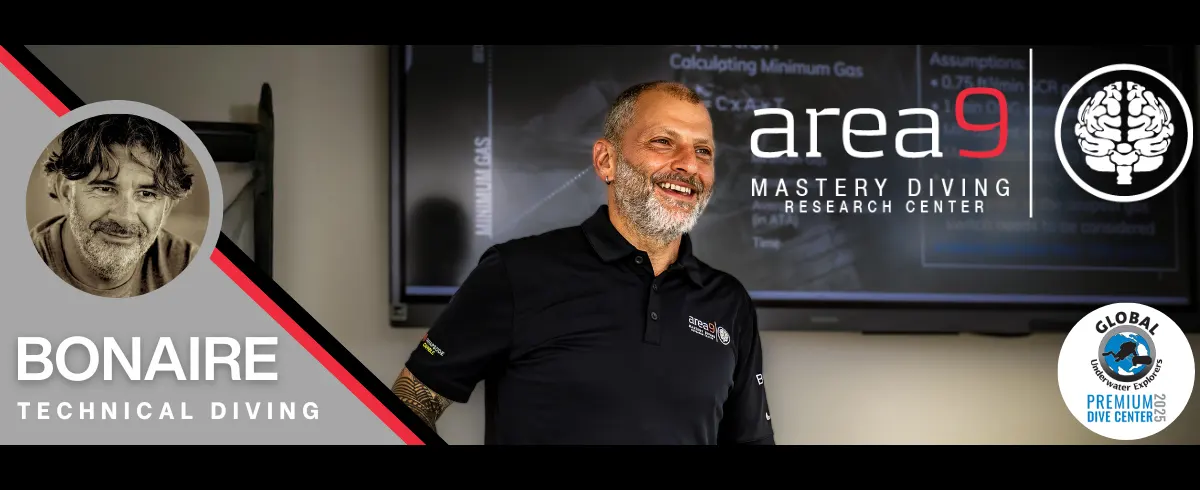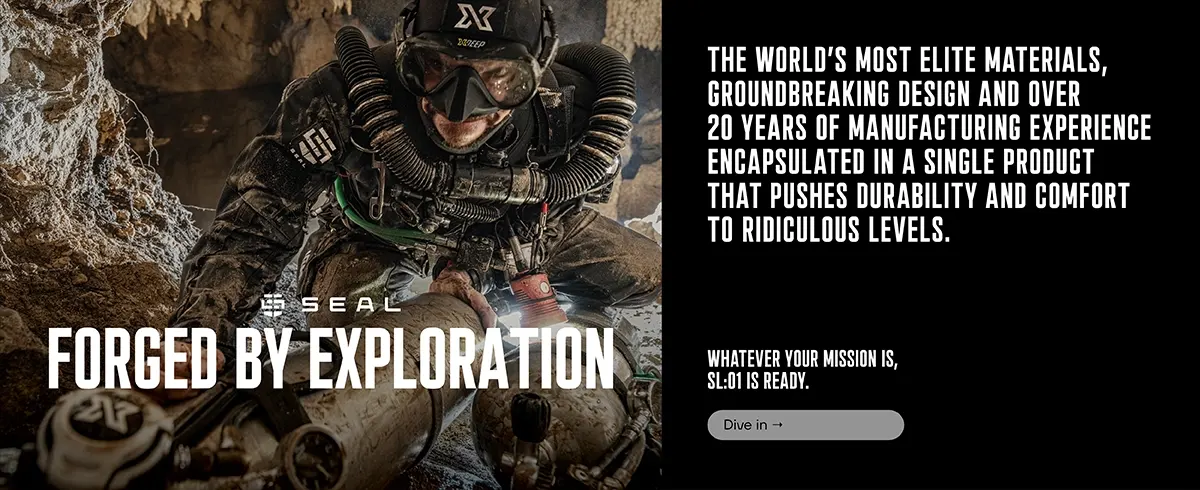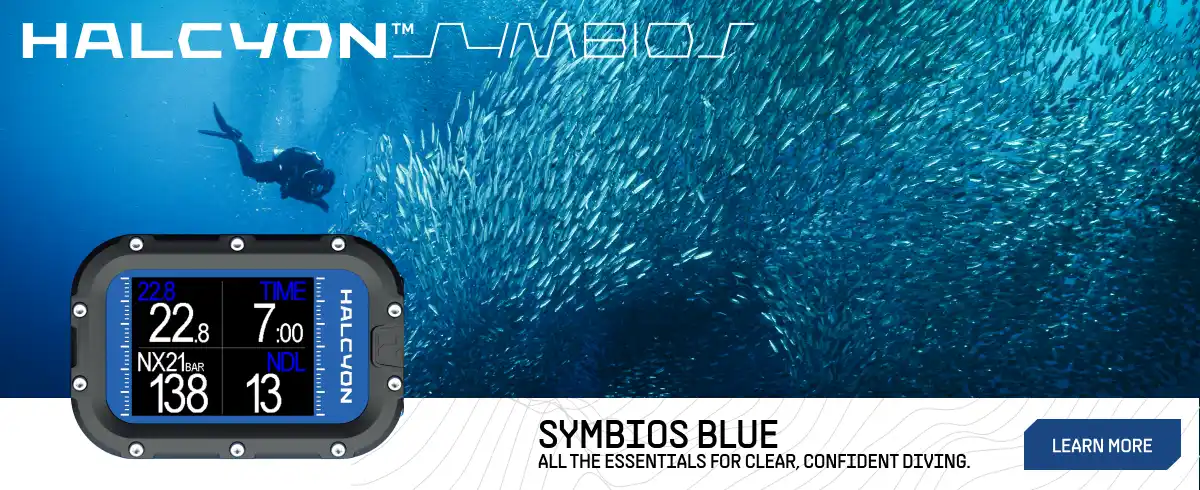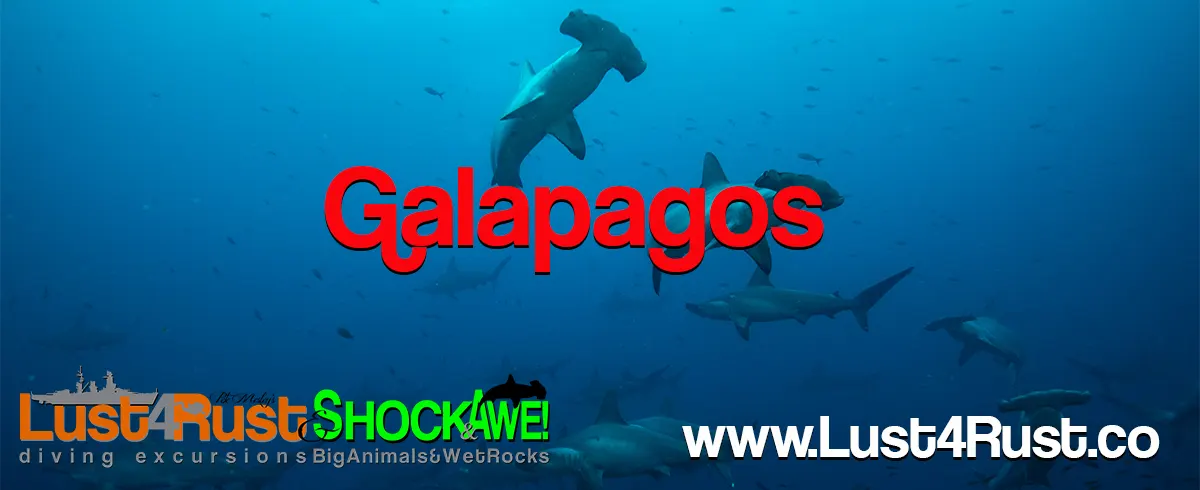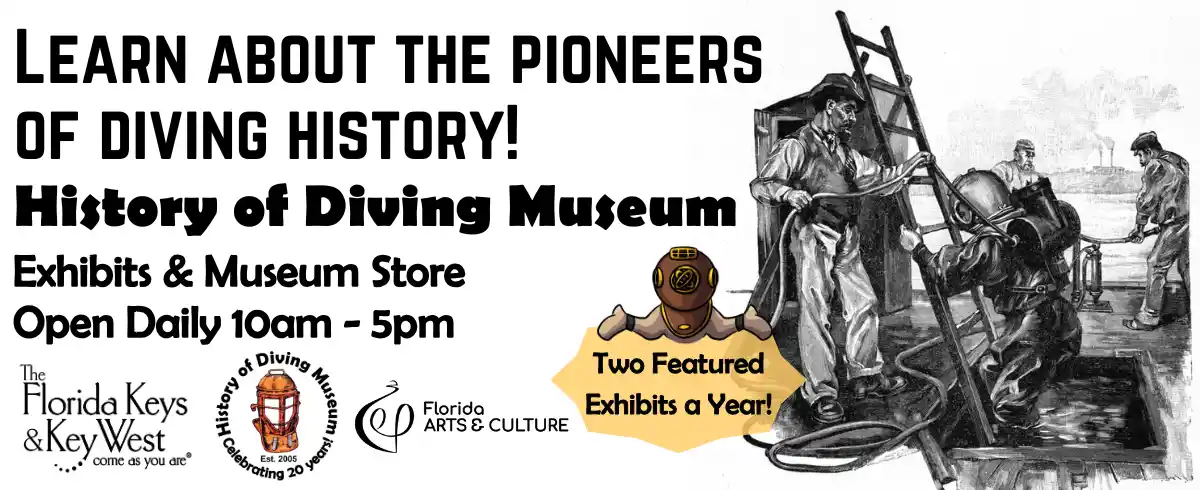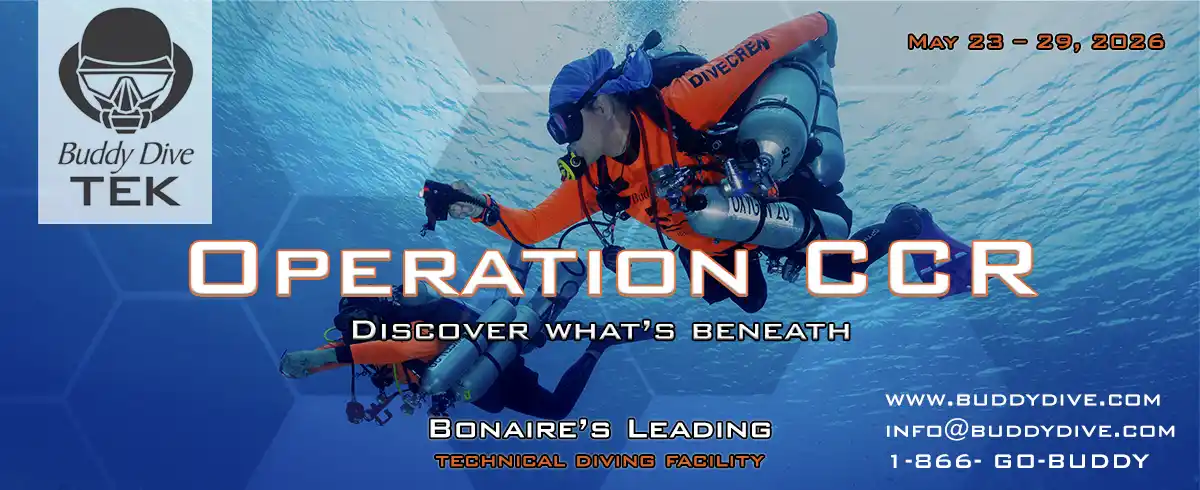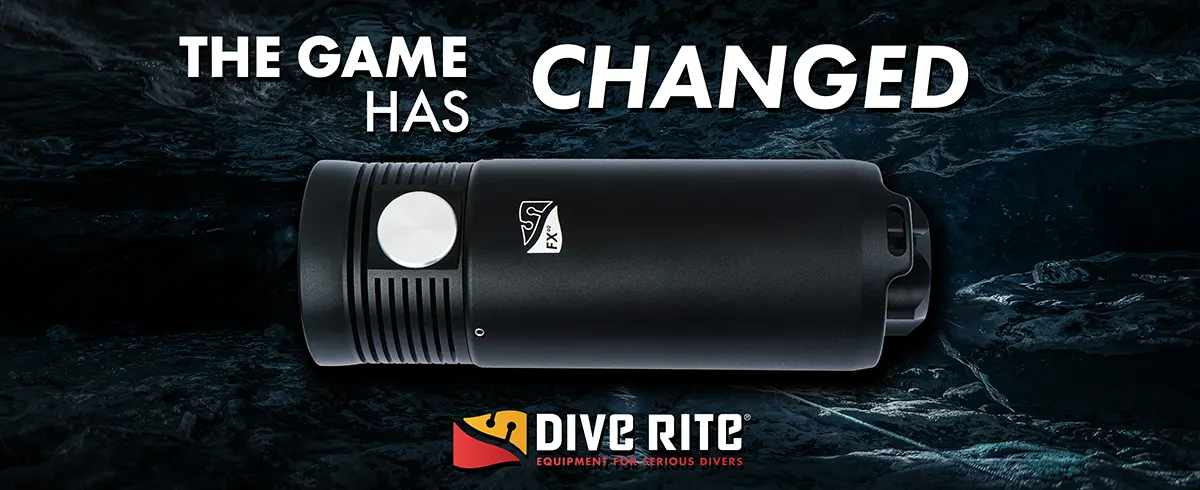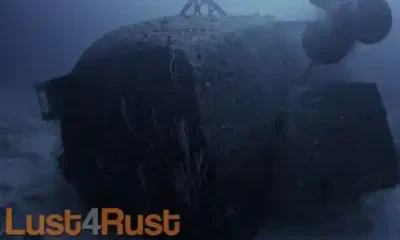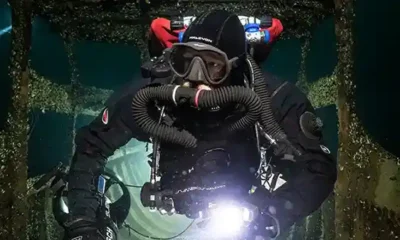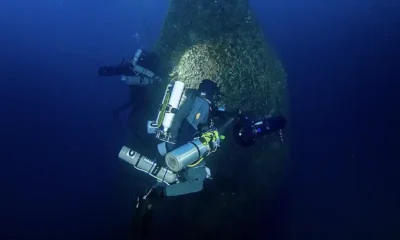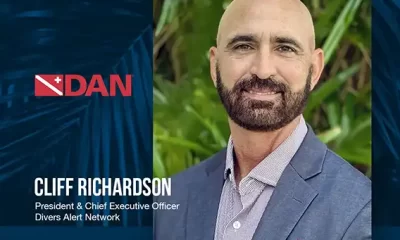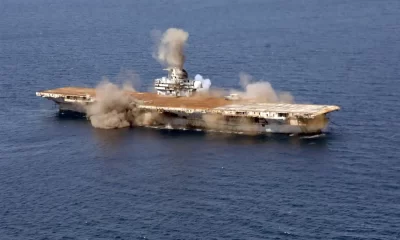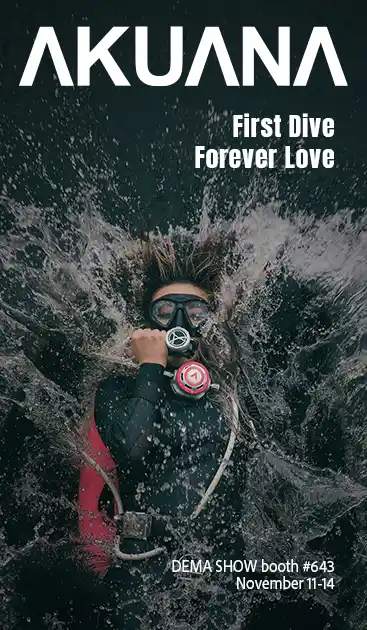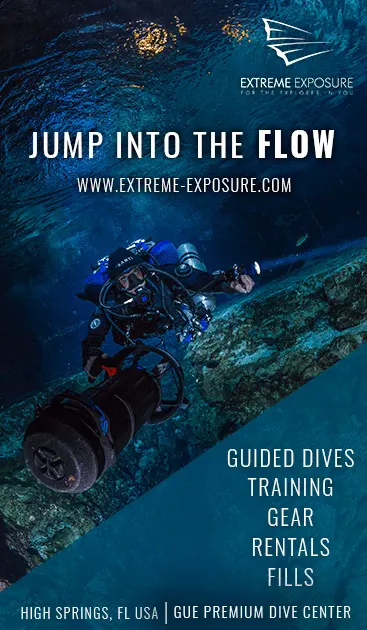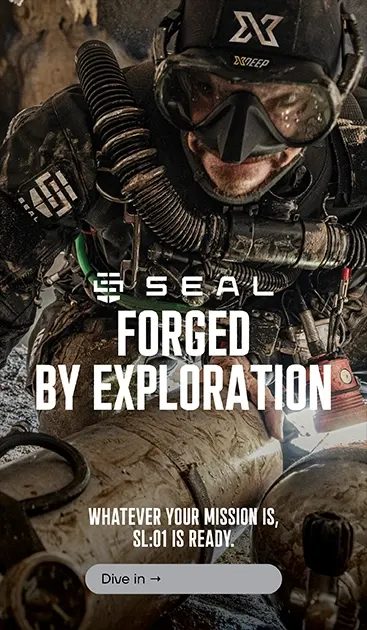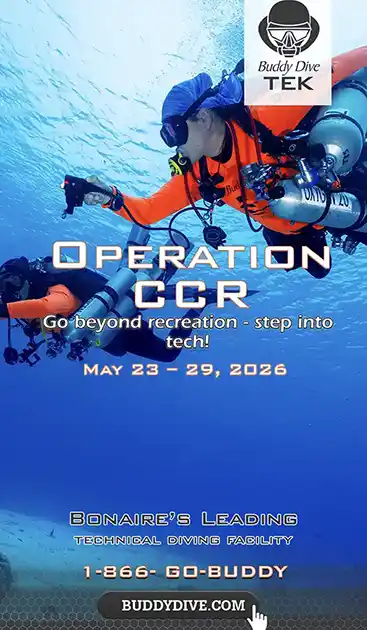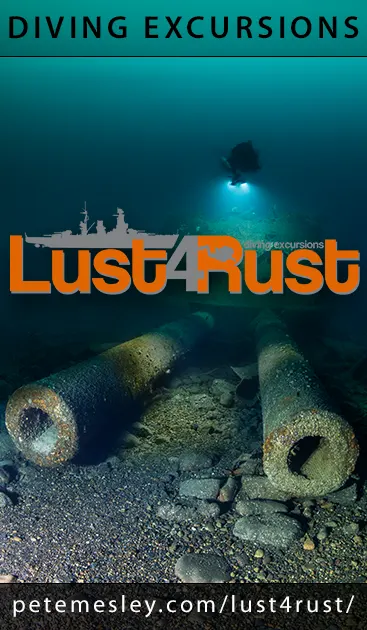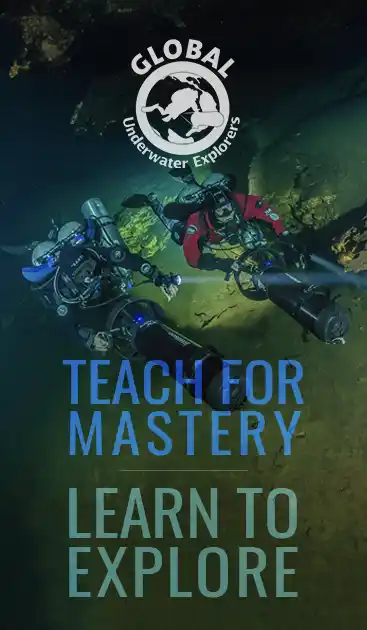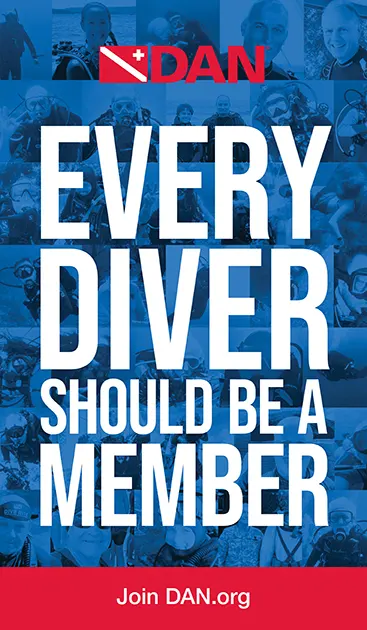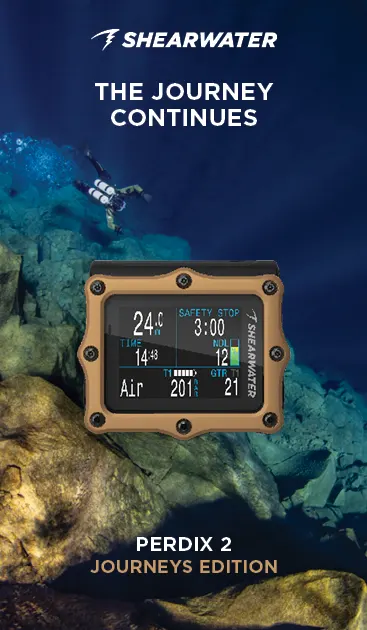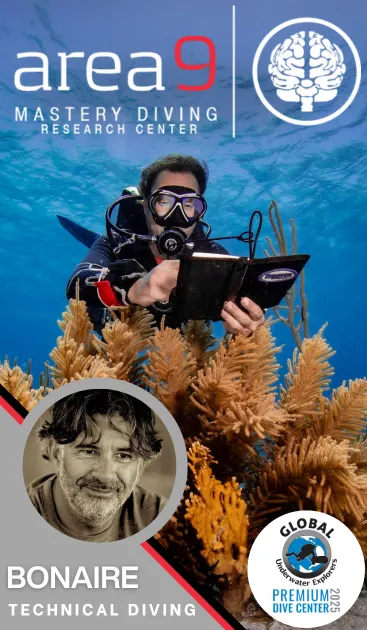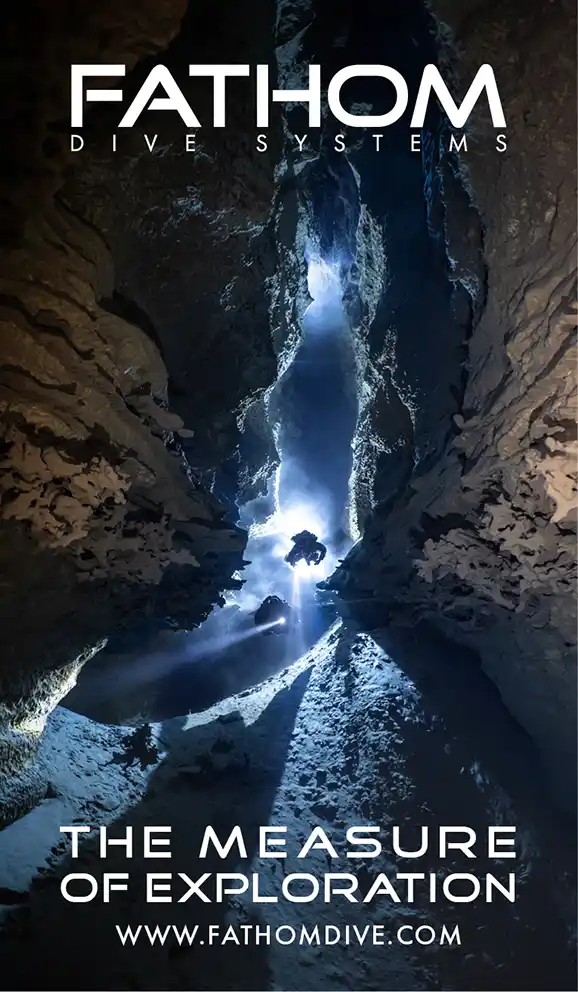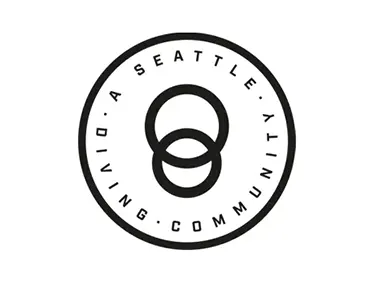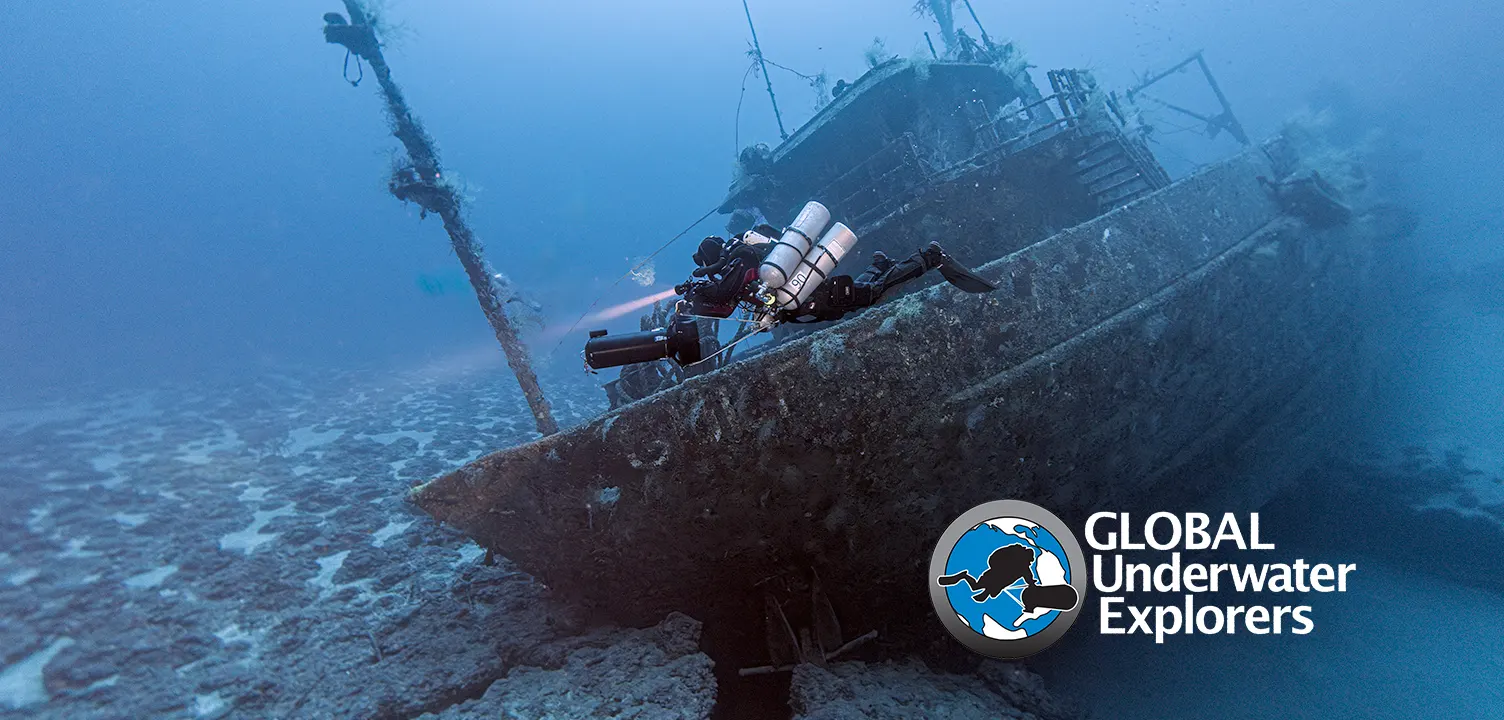
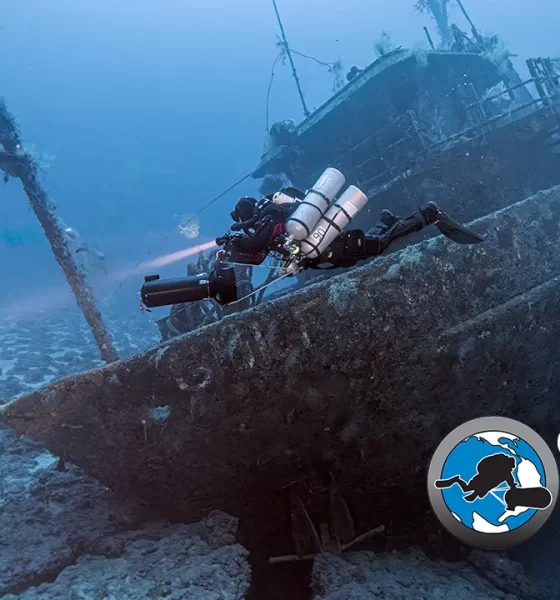
Latest Features
BEYOND BUBBLES
QUEST editor-in-chief Jesper Kjøller shares the results of their latest research trip conducted last Fall aboard Red Sea Explorer’s High Wave with DAN Europe’s Dr. Constantino Balestra and retired Dutch scientist and rebreather diver Søren Bøwadt. The goal was to measure 10 rebreather divers’ post-dive vascular gas emboli (VGE) scores during a week of deep (up to 110 m) dives. Here’s what they did and what they found out. Read all about it!
they found out. Read all about it!
Rethinking decompression with DAN Europe and Red Sea Explorers
Text & photos by Jesper Kjøller.
We might believe that we have a good grasp of decompression and how to plan and execute deep dives to minimize the risk of decompression sickness (DSC). However, the reality is that we may know what works, but we often lack a clear understanding of why it works. In collaboration with Divers Alert Network Europe’s Dr. Constantino Balestra and Red Sea Explorers, the Danish retired scientist and deep CCR diver Søren Bøwadt organized a ten-day liveaboard trip with the scientific objective to gain a deeper understanding (pun intended) of a crucial question: Why are divers apparently producing fewer bubbles at the end of a dive week with aggressive profiles compared to the beginning of the period?
Early one morning in October 2024, I received a laconic WhatsApp message: Nouran burned. She is gone.
It had only been a few days since I’d left the Red Sea Explorers liveaboard MV Nouran. The incident occurred in the evening at Daedalus Reef far from shore. Fortunately, the Red Sea Explorers flagship, MV Tala, was moored next to Nouran when the fire broke out, and all passengers were safely evacuated.
The loss of Nouran prompted the Red Sea Explorers team to quickly seek a replacement to accommodate their 2025 bookings. They chartered the brand-new liveaboard High Wave on a long-term basis. With her five decks and cabin space for 24 passengers, High Wave is designed for recreational diving. However, after a few trial runs and a reconfiguration of the dive deck to support the tools of the trade for tech diving—such as twinsets, rebreathers, deco and bailout tanks, scooters, boosters, and helium storage—she was ready to meet the demands of expedition diving as well.
Having spent over 40 weeks aboard the iconic vessels of the Red Sea Explorers fleet—Tala and Nouran—I felt very much at home on those boats. So, I boarded High Wave in Hurghada’s New Marina with some apprehension. Would she be able to deliver the same experience? However, I’ve come to learn that the soul of a dive operation isn’t in the vessel that ferries divers from point A to B. Instead, it’s in the people: the spirit and energy they bring. And soon, I forgot that High Wave was a new addition to the Red Sea Explorers family. I felt right at home.

Weathering the wait
Unfortunately, I got to know the ship all too well before we ever left port. Unusually high winds forced the Coast Guard to prohibit all sailing for three days, cutting our ten-day expedition down to seven. Or, rather, six—because even after we were cleared to leave port, we spent another full day hiding from the wind in Marsa Shona, farther down the coast.
This is an unusually strict stance from the Coast Guard, even considering the weather conditions. However, the Egyptian authorities are understandably eager to protect both tourists and stakeholders in the diving industry. Over the past year or so, there have been an unusually high number of incidents at sea—both weather- and fire-related—which have made the authorities more cautious, and probably rightly so. Oh well, as the saying goes: It’s better to be in the harbor wishing you were at sea than at sea wishing you were in the harbor.
Science on board
We made the most of our downtime while stuck in the marina, prepping equipment and attending insightful presentations by Tino and Søren. Tino, with his entertaining energy and thought-provoking catchphrases (like “A model is a way to organize our ignorance”) shares updates on the latest research in decompression theory.
Søren, equally captivating, delivered a detailed lecture on his specialty: the behavior of rebreather scrubber materials. Passionate about sharing his in-depth knowledge of the intricacies of scrubber dynamics, he’s a nerd in the best sense of the word.
Our diverse group of divers included recreational single-tank enthusiasts, open-circuit technical divers, and deep CCR explorers. Despite the advanced nature of the lecture topics, even the recreational divers seemed to enjoy the presentations which reflected the cutting edge of current research.
The team is truly international with participants from India, Germany, the US, England, Belgium, Denmark, Greece, Italy, Norway, Ukraine, Egypt, Lebanon, and Russia.
Red Sea Explorers specializes in catering for mixed groups of divers. After two decades in operation (RSE is celebrating its 20th anniversary in July 2025), the team has perfected the art of keeping everyone happy, even with different objectives, diving habits, gear, and gas needs.
Managing a wide range of equipment—including gas fills, specialized setups, and scooters—in a mixed group like this is much more demanding compared to a standard liveaboard operation where everyone does the same type of dive with the same equipment and gas. Additionally, the kitchen and saloon staff are constantly operating to serve meals; as recreational divers and deep tech divers are running on different schedules, there are always hungry mouths to feed.

Scanning for bubbles
This trip was not the first of its kind. This collaboration between Red Sea Explorers, Divers Alert Network Europe, and facilitator Søren Bøwadt has been ongoing since 2019, and this trip marked the fourth installment. Previous expeditions included more extensive research protocols such as measuring post-dive inflammation through urine, saliva, and blood samples, along with spirometry tests.
For this expedition, the approach was more streamlined and focused solely on ultrasound scans of the heart and lungs to monitor vascular gas emboli (VGE).
VGE are bubbles of inert gas; they form in the bloodstream during or after ascent from a dive as ambient pressure decreases and dissolved gas precipitates out of solution. A critical factor in the formation of VGE is the presence of microscopic gas pockets known as micronuclei—tiny, stable gas inclusions within tissues or on vessel walls that act as bubble seeds during decompression. Without these micronuclei, bubble formation would require much greater levels of supersaturation. VGE commonly appears in the venous circulation, especially in the right heart and lungs. They are often asymptomatic, and most divers will have some VGE following a dive without experiencing decompression sickness (DCS). However, their presence correlates with an increased risk of DCS which occurs when bubbles grow large enough—or are numerous enough—to obstruct blood flow, damage tissues, or provoke inflammatory responses.


Factors such as dive depth, duration, ascent rate, and the presence of a patent foramen ovale (PFO) impact the likelihood that VGE will lead to DCS. While VGE themselves are not inherently dangerous, they reflect decompression stress and help researchers and divers understand and manage DCS risk more effectively.
Bubble formation scans were conducted on the team of deep CCR divers at predefined intervals: immediately after surfacing, then at 15 minutes, 30 minutes, and one hour post-dive. The portable ultrasound device displayed real-time images on a smartphone or tablet and was relatively easy to operate.
Coal Mine Canary
Since there’s no direct correlation between the number of bubbles and DCS incidents, other factors are at play. However, much like many other natural phenomena, the relationship between bubbles and DCS symptoms tends to follow a Gaussian distribution.
If you plot bubble counts across a group of divers, you get a bell-shaped curve: Most divers have a moderate number of bubbles with fewer having very low or very high counts. Similarly, DCS symptoms tend to cluster toward the high-bubble end of the curve. Most divers with moderate bubbles experience no symptoms, but the risk rises significantly in those with high bubble loads—though, even then, not all high-bubble divers develop DCS. In short, bubble presence indicates decompression stress and risk, but it doesn’t guarantee illness.
The research conducted by Dr. Balestra and his team aims to add a new layer of understanding. It appears that decompression stress may not be fully captured by gradient factors, decompression algorithms, and bubble counts alone. The body’s biological state, especially after days of intense exposure, seems to matter, too. Pre-dive inflammatory status and other biological factors can’t be ruled out as contributing factors. However, since these parameters can be difficult to measure, ultrasound scans serve as a proxy for the bubbles that form in the bloodstream after a dive—the proverbial canary in the coalmine.
Interestingly, VGE counts droped during the first few days of diving. It seemed the divers were “adapting” to the exposure. These markers increased steadily throughout the week, indicating that the divers’ bodies were mounting a growing inflammatory response.
Balestra believes that, early in the week, the body “cleaned out” existing micronuclei. However, with each new dive, cellular stress led to the release of microscopic particles—called microparticles (MPs)—from stressed or damaged cells. These MPs can act as new nucleation sites for bubbles, even though they’re too small to detect with ultrasound. Over time, they accumulate and may become large enough to cause visible VGE and decompression stress.

Abu Kefan
Due to weather-related delays, the revised itinerary no longer permitted us to reach the SS Maidan wreck near Rocky Island in the deep Egyptian Red Sea. However, the DAN research team remained eager to collect data from deep dives and, fortunately, the region offers a wealth of exceptionally deep and spectacular reef sites when wrecks are out of reach.
Abu Kefan, situated in the Safaga area, is one of the deepest offshore reefs in the Egyptian Red Sea. Its walls extend far beyond the limits of even the deepest scuba divers. In many ways, it resembles the renowned Elphinstone further south with its elongated north/south orientation and stretching plateaus at both ends.
We recently returned from Brother Islands, where we had excellent dives on Aida and Numidia. After a smooth overnight crossing, we were now drifting next to the reef as we prepared for the Abu Kefan drop.

Coordinating a dive with ten CCR divers—each equipped with stages, scooters, and cameras—on a dive deeper than 100 m/328 ft can be challenging, especially with a crew new to technical diving. However, with the supervision of the capable Red Sea Explorers team, they were quickly learning the ropes.
We followed the southern plateau slope until we reached the drop-off. After about ten minutes on the throttle, I found myself hovering above a black abyss. I made a quick circle to check on the team and, after receiving a reassuring OK from everyone, we descended almost vertically.
At 110 m/360 ft, I leveled out and stopped the scooter to swim a bit and ensure that the team stayed together. I performed a quick sit check and assessed my level of narcosis. The pre-blended Tx6/86 mix we were all using on the trip felt great, and I felt clear and alert. We began our slow ascent back along the sloping plateau. It was almost as if the shape of the slope was designed by John Scott Haldane himself: Following it provided the perfect ascent profile.
After a two-hour dive, we surfaced to be picked up by the zodiacs which took us back to the mother ship and the omelet waiting in the galley. Note to self: Abu Kefan is an underrated reef that deserves to be mentioned alongside the More Famous Shore Reefs Elphinstone And Daedalus.

One Dive – Three Wrecks
Back in the Hurghada area, we had time for one more deep wreck dive. The Gulf Fleet No. 31 at Shaab Ruhr Umm Qammar is one of my favorite dive sites in the north and another specialty of Red Sea Explorers. With scooters, it’s possible to do three wrecks during the same dive—just like the four wrecks at Abu Nuhas and the two wrecks at Brother Island.
The Gulf Fleet No. 31, an offshore supply vessel built in 1978, met its fate under mysterious circumstances. It’s widely believed that the ship struck the northeast tip of the reef. After grounding, the crew abandoned the vessel which remained perched atop the reef for several weeks before eventually slipping over the edge and descending to its current resting place at a depth of approximately 105 m/345 ft.
The exact date of the incident is a subject of debate, and the ship wasn’t rediscovered until 1995, leading to ongoing discussions about the precise timeline of events.
Today, the Gulf Fleet No. 31 serves as a challenging but very photogenic dive site for technical divers. The wreck lies upright on a rocky outcrop near the northeast tip of the reef. Divers can explore various parts of the vessel, including the stern at 100 m/333 ft, the pilothouse at 95 m/312 ft, and the open work deck at 86 m/282 ft. It’s possible to swim under the wreck through a crack in the ocean floor beneath it.
After 15 minutes, we signaled to leave the wreck and aimed for the 65 m/213 ft curve to hit the next wreck, the Colona IV. This liveaboard, one of the first of its kind operating out of Hurghada, sank in late April 1995 after striking the reef during heavy weather. The vessel now rests at a depth, lying on its starboard side. I always enjoy visiting Colona IV because I actually spent time on board before she sank!
The third wreck on the reef is the remains of a police boat with debris scattered over a large area. It’s not much, but it’s a nice addition to the shallower decompression stops.

Adaptive Decompression
The fusion of world-class diving and pioneering research made this expedition far more than just another tech dive safari. It offered a glimpse into the future of decompression science—one where physiology, not just physics, takes center stage. The idea that our bodies might adapt or become sensitized to repetitive deep diving challenges long-held assumptions and opens the door to more personalized, biologically informed dive planning. Perhaps there’s even a psychological factor at play; could the increased prevalence of DCS incidents at the beginning of a trip also be attributed to the fact that you feel more confident and at ease after a few days?
While the data collected on this trip won’t yield instant answers, it adds to a growing body of evidence suggesting that decompression risk is about more than gradient factors and run times. It’s also about inflammation, stress, and how individual bodies respond over time.
As we returned to shore, sunburned and satisfied, there was a shared sense among the group that we’d not only explored new depths underwater but also cracked open a deeper understanding of what safe diving might mean in the years to come. The ocean still holds many secrets, but with collaborations like this—between scientists, divers, and operators—the gap between theory and practice continues to narrow. The next trip can’t come soon enough.
DIVE DEEPER
InDEPTH: Exploring Deep Technical Wrecks in the Red Sea by Rasaalika Singhania

Jesper began his professional life as a musician but discovered his passion for diving over 30 years ago. He changed careers, becoming a diving instructor in 1994 and a PADI Course Director in 1999—the same year he took on the role of editor for the Scandinavian diving magazine DYK. He became a GUE instructor in 2011, and in 2015, relocated to Dubai to bring his talent for underwater storytelling and imagery to Deep Dive Dubai as Marketing Manager. From his base in Dubai, Jesper travels the globe to teach, contribute to international dive publications, and take part in exploration projects such as the Mars field studies in the Baltic Sea, deep wreck expeditions in Egypt, or the Battle of the Convoys project in the Southern Med. In 2021, he became Editor-in-Chief of Quest, GUE’s member journal.



